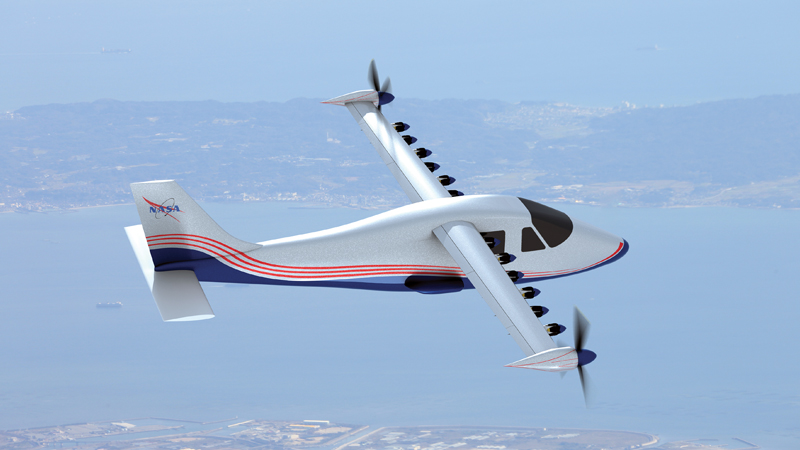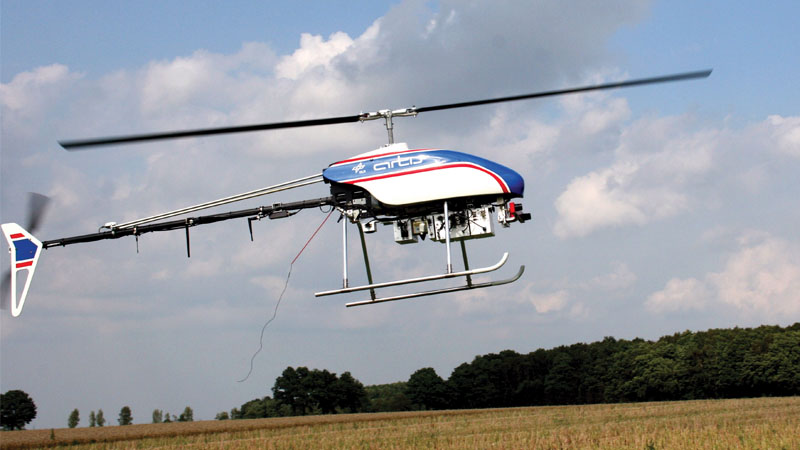Drones, space probes and rovers take on ambitious navigation duties
By UDAY J. SHANKAR, KEVIN P. BOLLINO AND BEHÇET AÇIKMESE|December 2020
The Guidance, Navigation and Control Technical Committee advances techniques, devices and systems for guiding and controlling flight vehicles.
As the covid-19 pandemic spiked household package deliveries, companies such as Amazon, Walmart, Flytrex, Zipline and Flirtey leveraged advances in autonomous unmanned aerial vehicle technology to push for means of faster, alternate delivery service. The Unmanned Aircraft System Integrated Pilot Program laid the foundation in 2019 with Wing Aviation’s drone demo delivering food and pharmaceuticals and UPS Flight Forward’s drone demo delivering medical supplies. This year, other drone delivery startups quickly followed suit with enhanced performance and improved safety.
Drone maker Flirtey of Nevada received a patent in July for its concept for autonomously deploying a parachute when a drone experiences a problem and then steering the drone to a safe landing zone. In August, Amazon’s Prime Air drone program received FAA approval to begin operations with a goal of delivering 5-pound (2.3-kilogram) packages to customers’ doorsteps in 30 minutes or less and beyond the operator’s line of sight from a range of about 15 miles (24 kilometers). This certification signals FAA’s confidence in drone delivery operations and safety, enabled by decades of advances in guidance, navigation and controls. In September, Walmart initiated a pilot program with Israeli startup Flytrex and California-based Zipline to start testing its drone delivery program. Some of the technology employs cloud-based smart control systems with humans-in-the-loop to ensure safe operations.
In February, Northrop Grumman’s Mission-Extension Vehicle-1 docked with and took control of Intelsat-901, a 19-year-old satellite. According to the company, this was the first commercial spacecraft to dock with an uncooperative target. MEV-1 controlled the attitude and orbit of Intelsat-901, establishing a new satellite revitalization paradigm by telerobotically operating an aging satellite versus refueling it. MEV-1 subsequently moved Intelsat-901 from the geosynchronous “graveyard” orbit to its new operational home. In April, Intelsat-901 restarted its operations for an expected five more years. The mission provides a study in spacecraft guidance, navigation and control: rendezvous and proximity operations, which involve intricate attitude and position control; docking with an uncooperative and uncontrolled satellite; and controlling both satellites to tight pointing tolerances. In August, an Ariane-5 launched MEV-2 with its first mission to resuscitate Intelsat-1002 in 2021. In March, DARPA selected Northrop Grumman to be its commercial partner for its Robotic Servicing of Geosynchronous Satellites program.
In July, an unprecedented three Mars missions commenced. The Hope orbiter was launched for the United Arab Emirates atop a Japanese H-IIa launch vehicle. Hope will orbit Mars at altitudes of 20,000 to 45,000 kilometers and make observations with two spectrometers and a camera. The mission’s primary aim is to inspire schoolchildren and spur UAE’s science and technology industries. China launched Tianwen-1, a triumvirate of an orbiter, a lander and a rover destined for Mars. According to the mission chief scientist, this marks the first time any mission has attempted all three at once. Building on the success of its three-pronged lunar orbiter-lander-rover, Chang’E launched in 2018, Tianwen (which translates to “Questions to Heaven”) will explore Mars both at the surface and from altitude. The orbiter will conduct scientific observations and act as a relay for the lander and rover. At the end of July, the U.S. launched the Mars rover Perseverance in a quest for signs of ancient microbial life. The rover also carries an experimental miniature helicopter, Ingenuity. A joint NASA-European Space Agency mission is being planned to return samples collected by Perseverance back to Earth in 2031.



































